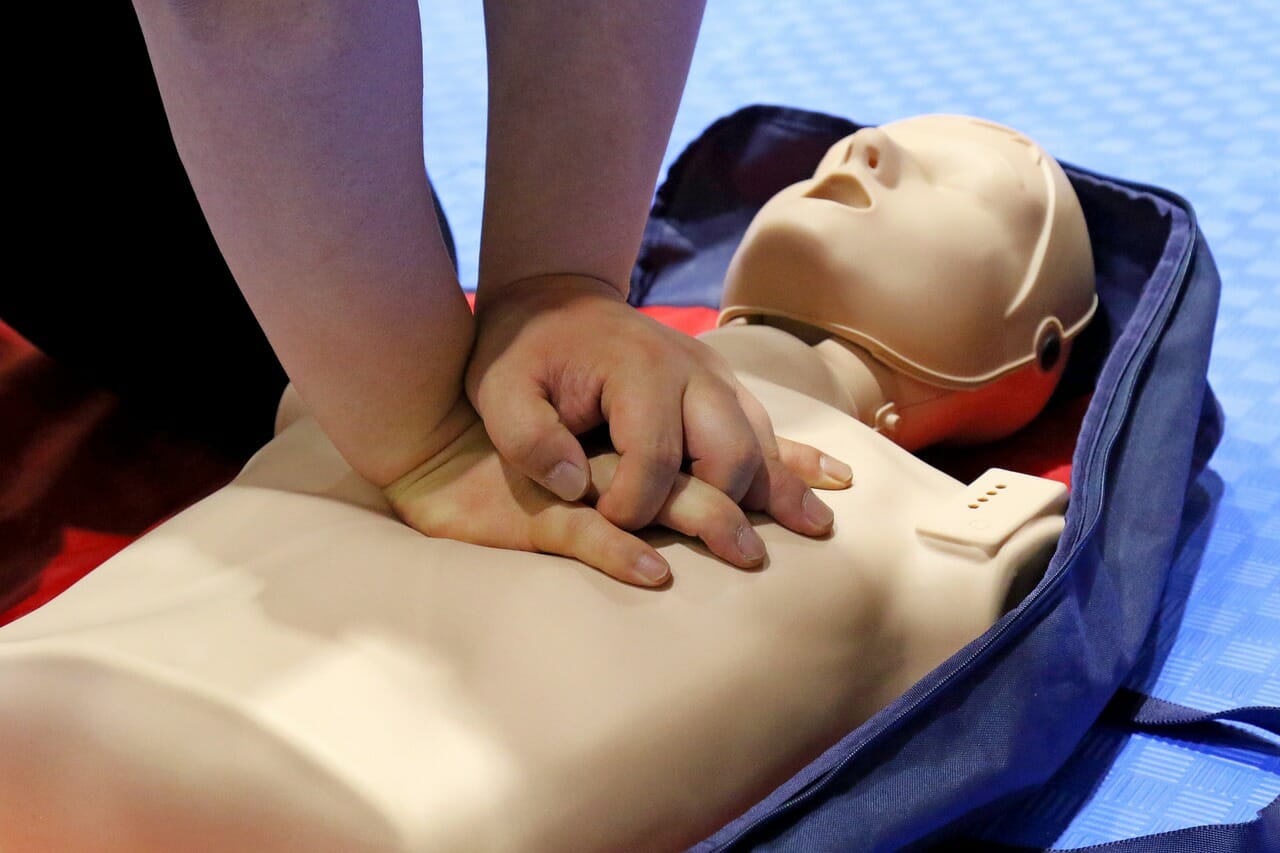There are many different first aid courses available to the public in the UK. It can be tricky to know what the best course is for you, especially if you’re not sure what it covers.
You need to choose a course that covers the injuries that you encounter most often, and teaches you how to treat them properly. This way, you can be ready to save lives in almost any emergency situation.
1. Basic First Aid
Basic first aid training is designed to help you respond quickly to injuries. It’s a skill that you can use in many different situations, from helping someone who has a cut to assisting with an accident or even a burn.
This type of training is essential for anyone who works in a field where accidents happen. It can save lives and prevent serious complications for people with sudden illnesses or injuries.
You’ll learn how to handle a range of different emergency situations, including bleeding control, wounds and fractures, chest pain, choking, and environmental emergencies like hypothermia or heat stroke. In addition, you’ll also learn how to assess the mental status of a person and when and how to move them in an emergency situation.
It’s important to note that some courses will feature audio and visual material that simulates real-life medical emergencies. These can be distressing and trigger emotions. It’s best to ask your trainer for advice if you feel uncomfortable or worried about the content.
One of the most common reasons people take a course is to learn how to do CPR. This is a valuable skill that can help save lives in the event that someone has a heart attack, seizures, or a stroke.
The skills learned during a first aid course can also be used in other medical situations, such as treating a burn or providing care for a child with a broken bone. These techniques can be used to keep the injured person comfortable while waiting for a more advanced level of care to arrive.
Wounds and Fractures: A broken bone is an extremely painful and potentially life-threatening injury. It’s critical to treat the break correctly to reduce the risk of infection and avoid a prolonged recovery time.
A person who has a broken bone is often in shock and needs to be kept still while they recover. They may appear pale or disoriented, and you should ensure they’re warm, have no contact with light, and don’t receive any food or drink until a doctor arrives.
2. Emergency First Aid at Work
Emergency First Aid at Work (EFAW) is an essential course for those who want to learn first aid skills that can be used at home or in the workplace. It’s a great choice for people who are required to be trained in this area by their employer, but can also be taken as a standalone course.
EFAW training is a one-day course and leads to a nationally recognised qualification that’s valid for three years, even after you change employers. It’s a great option for anyone who works in a low-risk workplace or wants to become a nominated first aider.
Learners will develop the skills and confidence to help someone who is:
- unresponsive and not breathing, including how to use of an automated external defibrillator (AED)
- unresponsive and breathing
- having a seizure
- choking
- bleeding heavily
- suffering from shock
- burnt.
The course also includes information on:
- assessing a casualty
- monitoring a casualty
- where to get help
- electrical incidents
- accident recording and reporting
- the control of substances hazardous to health (COSHH).
The Health and Safety Executive recommends that employees who have a first aid qualification take annual refresher training. There are a variety of options, including FAW and EFAW Refresher courses.
You should carry out a first aid needs assessment of your workplace. This will help you decide what equipment and facilities to make available for your workers. It’s also a good idea to get input from your workers – what do they think the risks are at work?
In addition to making sure that you have a trained first aider, you must ensure that all your workers have access to a first aid kit and the facilities and equipment necessary to administer first aid treatment. This can be in the form of a dedicated first aid room or a portable first aid kit provided for mobile workers.
A first aid box should be kept in a place where it is easy for workers to find and can be easily accessed. The contents of the first aid box should be sufficient to treat minor injuries and illnesses and should include items like bandages, scissors, burns dressings, gloves and wipes.
It is important to have a person in charge of the first aid arrangements for your site, who can tell staff what the emergency first aid arrangements are and where they are located in the workplace. This person must be able to take charge of the emergency situation until more expert first aid help is available, such as a trained first aider or an ambulance call-out.
3. First Aid for Parents and Families
It is essential for parents to have first aid knowledge so that they are able to respond quickly and efficiently in emergency situations. This can make all the difference in preventing serious injuries, pain and even death.
Having a basic understanding of how to treat common illnesses and injury such as cuts, burns and head injuries can mean the difference between life and death. This is why it is recommended that all parents attend a course in first aid.
Injuries are the leading cause of deaths in children, especially those between the ages of 1 and 4. Accidents are more likely to occur at home than out and about, so it is important that parents have a comprehensive knowledge of how to deal with these emergencies.
Many children will have a bump or graze at some point, and it is important for parents to have a first aid kit to be prepared for these emergencies. This is particularly useful if you are planning to go on holiday or have kids at home during the school holidays.
There are many sources of information on first aid. Some of these include school books, medical practitioners and nurses. However, the most popular source of information is mass media such as TV and newspapers.
These are often not updated regularly, so it is crucial that you have current and fresh information at all times in case you need to use this knowledge. This can be done by attending regular refresher courses at work or in your own home.
This will ensure that you are able to use the skills learned in a crisis, without fear of forgetting anything. It will also give you peace of mind, knowing that you can help your family in the event of an emergency.
Almost one third of the parents attended a first aid course at a primary healthcare centre in Al-Madinah city, but only a few were confident about their ability to cope with incidents and injuries. Hence, more awareness and training needs to be provided in order to improve first aid practices among parents of Al-Madinah city.
4. Advanced First Aid
There are times when it is necessary for first aiders to have a greater level of training than just the basic skills and techniques that are offered in a standard first aid course. This is particularly true for those who work in remote areas or in environments where medical assistance may take a long time to reach, such as on industrial sites.
Advanced first aid is a form of training which involves all the basics and skills of basic first aid but goes a step further in the treatment of more serious injuries. It aims to deal with any issues that involve the vital organs of the body, such as breathing and circulation problems.
This training also includes cardiopulmonary resuscitation (CPR), which is used for casualties who have suffered cardiac or respiratory arrest. This helps to restart their heart and breathing by supplying oxygen to the body and giving mouth-to-mouth rescue breaths.
The advanced course can be for people who already have a standard first aid qualification or for people who are not involved in the medical field but who want to learn more about emergency procedures. It can include topics such as emergency preparedness, medical equipment and the use of advanced tools, including bag valve masks.
These courses can be taken either as stand-alone courses or in conjunction with a regular first aid course. They are often taught by qualified first aiders who can provide students with the best advice and tips.
Usually these courses will be held in a classroom setting and will include both theory and practical content. In addition to the usual emergency techniques, they will often also include more in depth topics such as patient assessment, airway management and hemorrhage control.
In many cases, these courses will also include advanced tools and equipment such as syringes with life saving drugs. This can be very useful in situations where there are no medical professionals available to help the victim and a delay in providing care could lead to death or long term damage.
There are a variety of first aid courses available to suit the needs of individuals and organisations of all sizes. Whether you are looking for a short course or a longer three-day one, there is something available for everyone. The important thing is to choose a course that suits your circumstances and the needs of your organisation.




